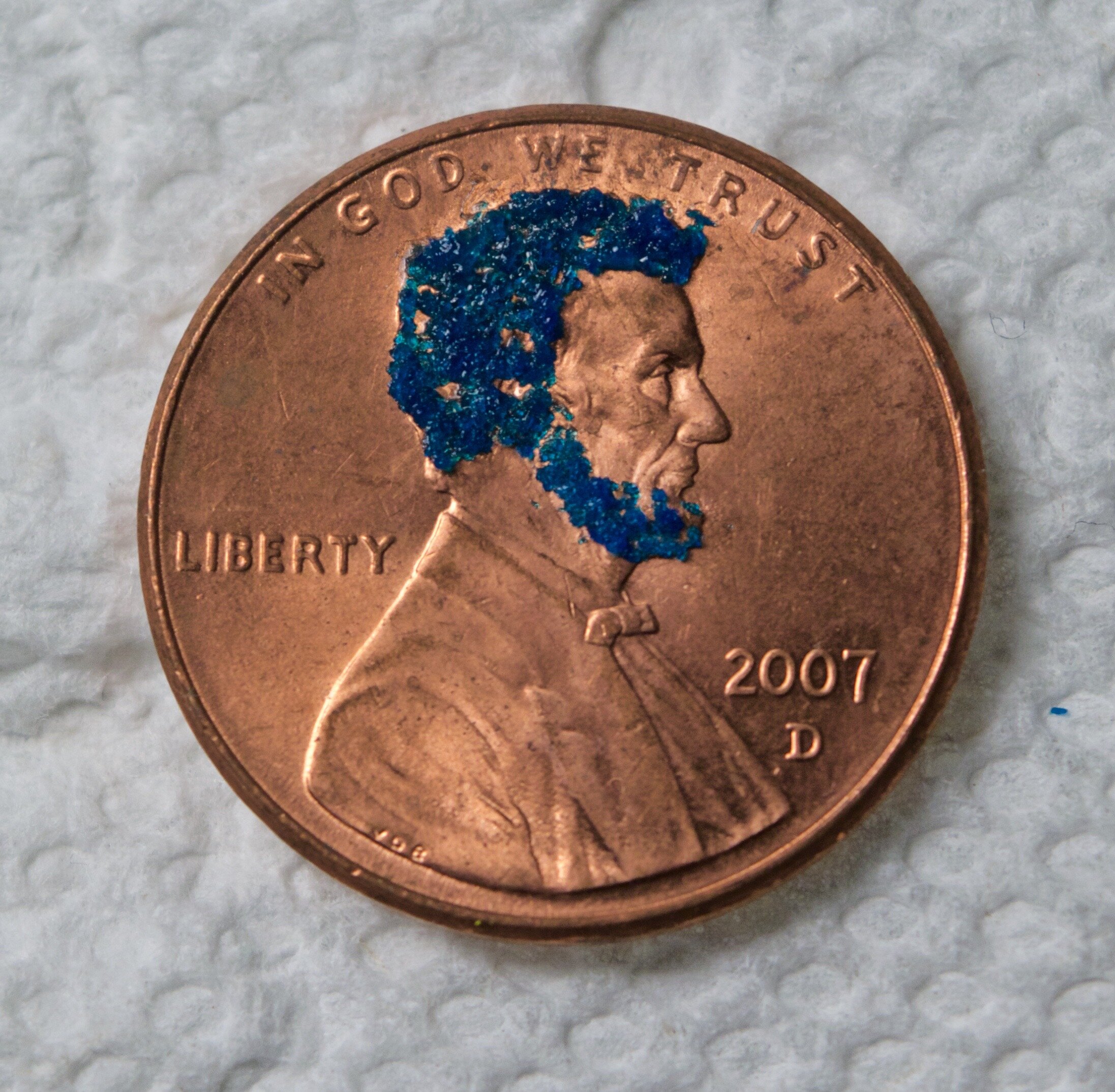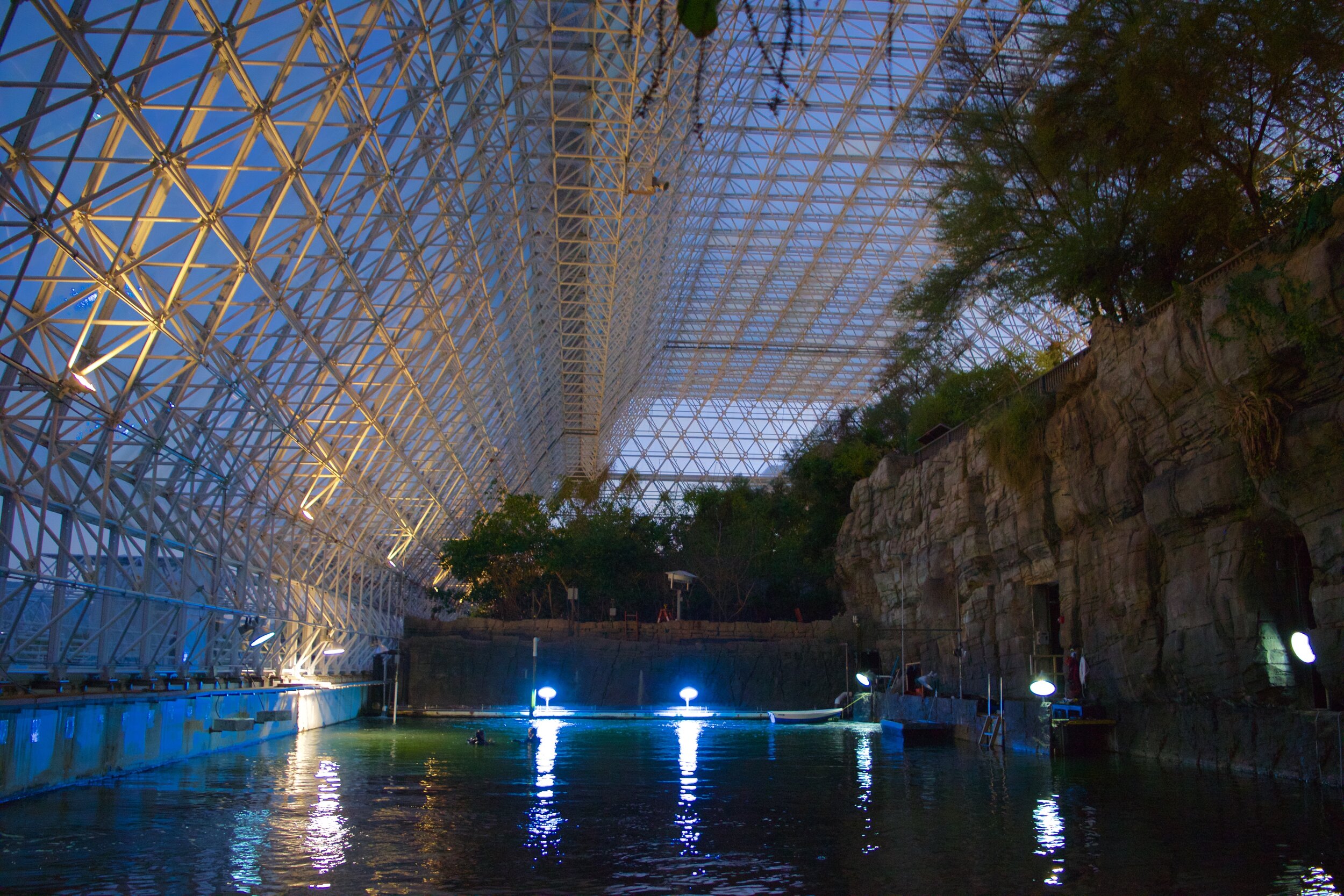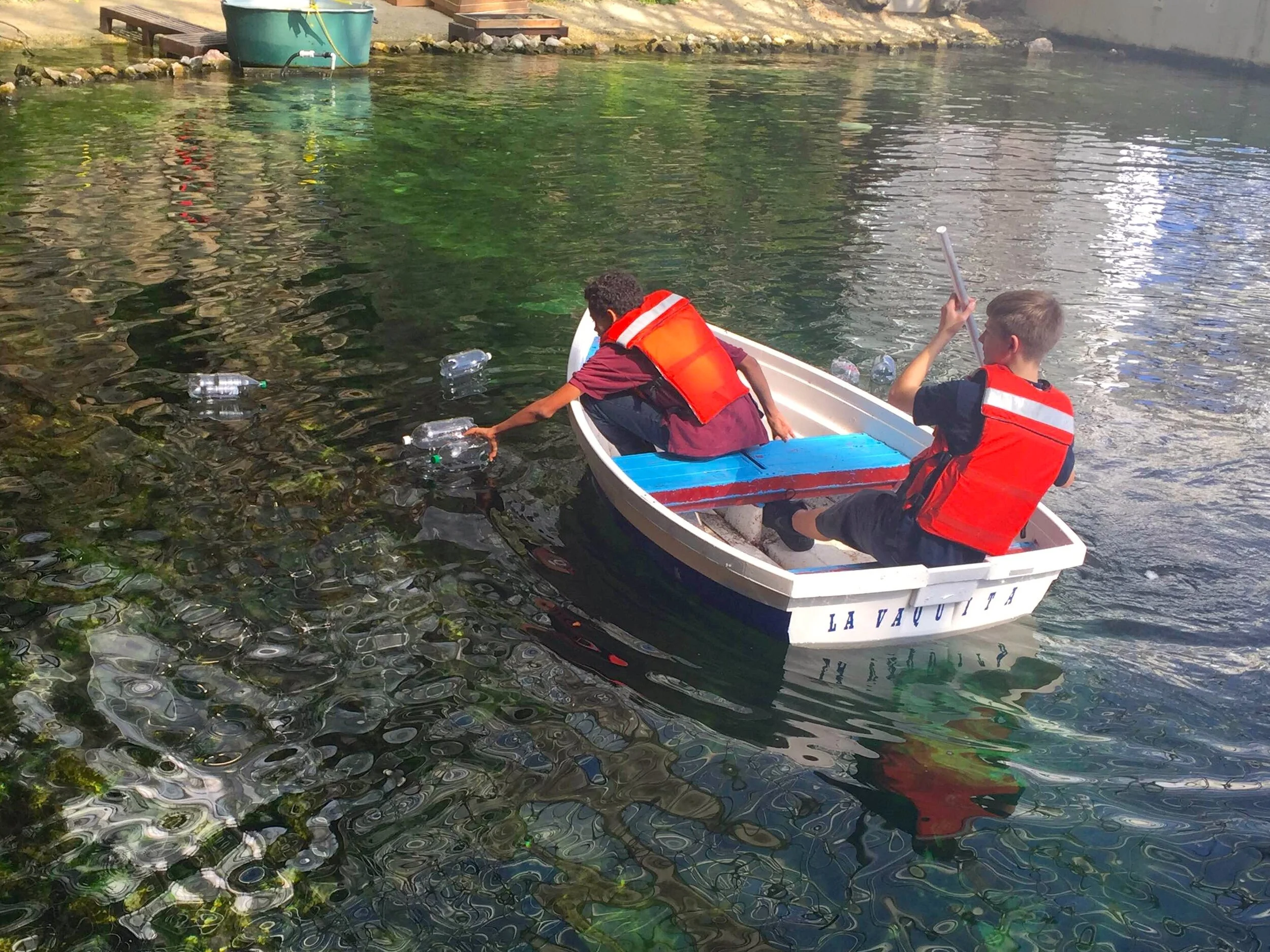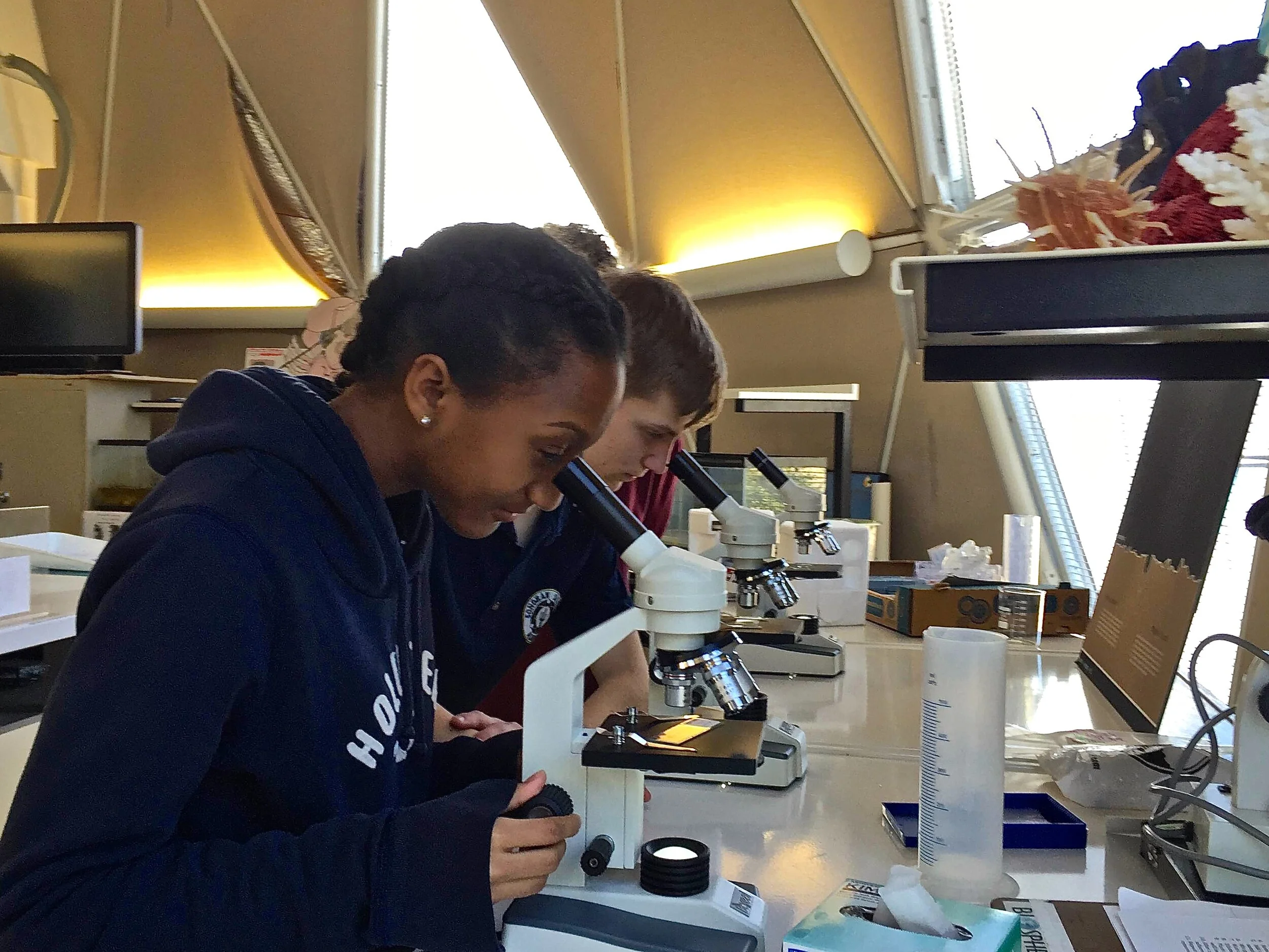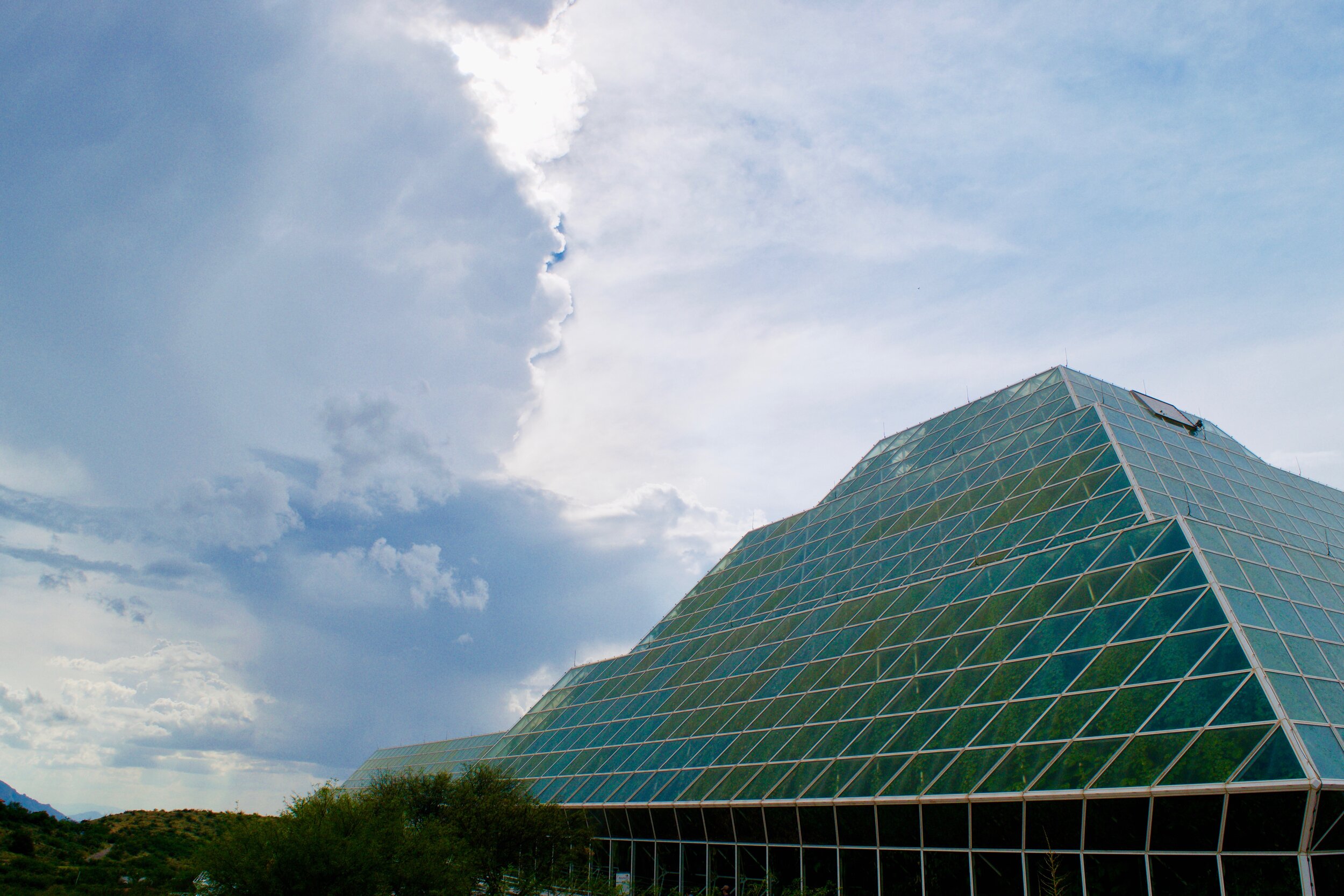
Biosphere 2
During my M.S. degree, I worked with Biosphere 2, a self-enclosed model of Earth's major ecosystems that serves as a major hub for research and outreach. Biosphere 2 contains a saltwater ocean, complete with tropical fish, in the middle of the Arizona desert, which makes it a unique place to get students interested in marine biology and conservation. The short course we've created will introduce middle- and high-school students to the problems of plastic pollution in our oceans. The first question I ask students is, "How many of you have visited the ocean?" If I'm lucky, three of the twenty students will raise their hands. Next question: "How many of you want to visit the ocean?" Every hand goes up. That's what makes Biosphere 2 a unique place to work. For students who have never seen the ocean firsthand, Biosphere 2 is the next best thing. It also lets us try things that we could never do in the real ocean. For example, the first activity asks students to throw plastic bottles in the ocean (gasp!), use them to track currents in our ocean, and devise ways of collecting them.
It generally takes students around five minutes to clear a patch of ocean the size of an Olympic swimming pool. At that rate, it would take 32,000 years to clear just one of the ocean's five garbage patches! Another activity asks students to look at some microplastics found in common household items, like synthetic fabric and some brands of toothpaste. These plastics, barely visible to the naked eye, often end up in our water, where they are mistaken for plankton and eaten. Though programs like these only last a day, it can make a real impact on students' interest in science. This type of science requires a life vest, not a lab coat, and that kind of hands-on learning gets students excited to explore!
